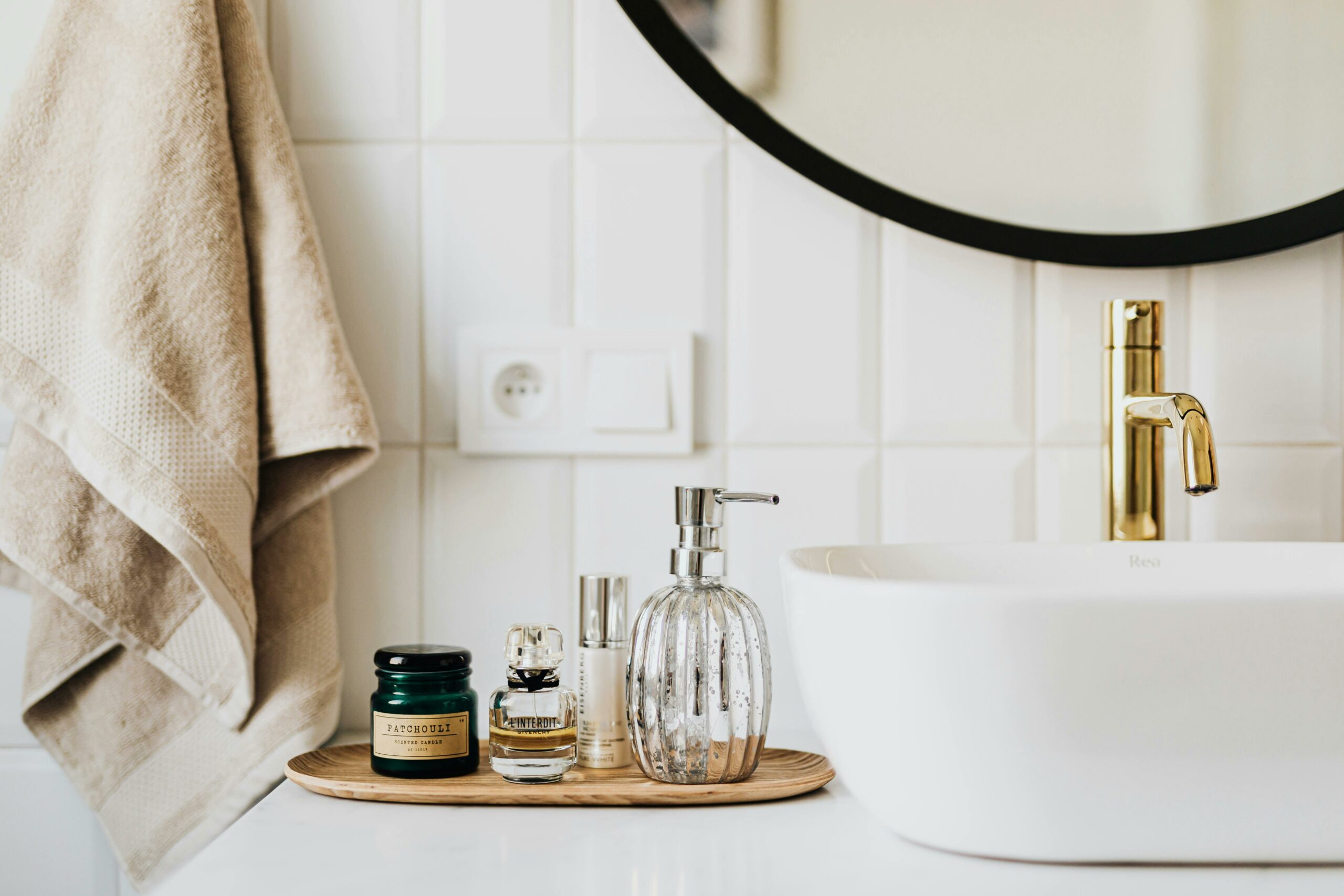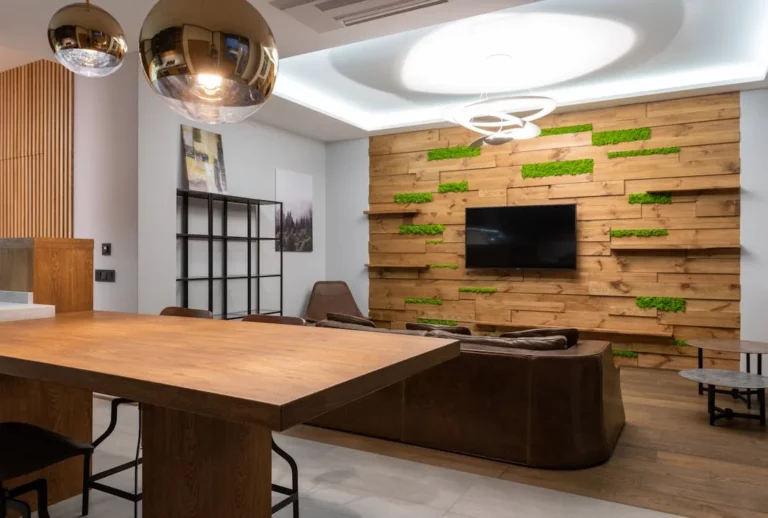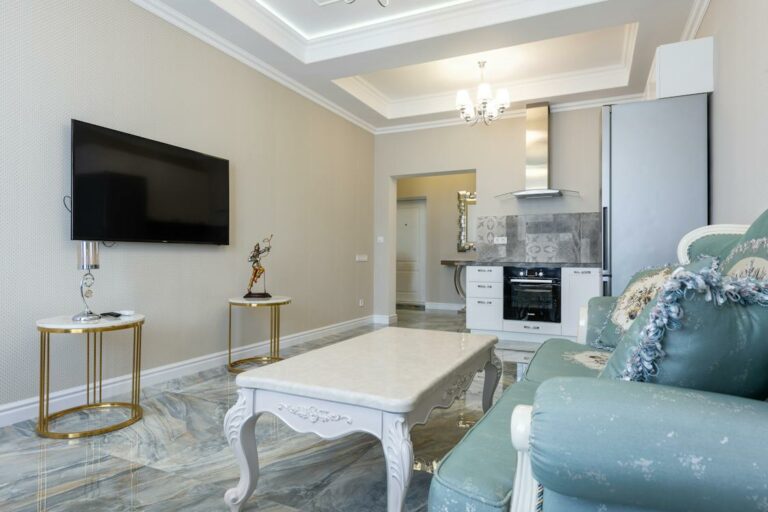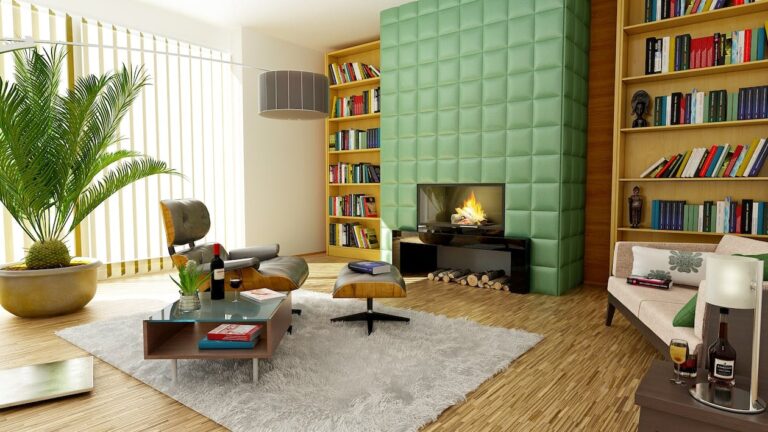Transform Bathroom into a Relaxing Oasis: Trends in Bathroom Design for 2024
Are you tired of coming home to a bathroom that feels more like a utilitarian space than a relaxing oasis? Do you dream of transforming your bathroom into a sanctuary where you can unwind and rejuvenate after a long day? Look no further! In this step-by-step guide, we will show you how to turn your bathroom into a tranquil haven, tailored to your unique taste and style. From the latest design trends to practical tips on planning and renovation, we’ve got you covered. Say goodbye to your outdated bathroom and hello to a luxurious retreat that will leave you feeling refreshed and revitalized. Let’s dive in!
Table of Contents
Top Trends in Bathroom Design for 2024
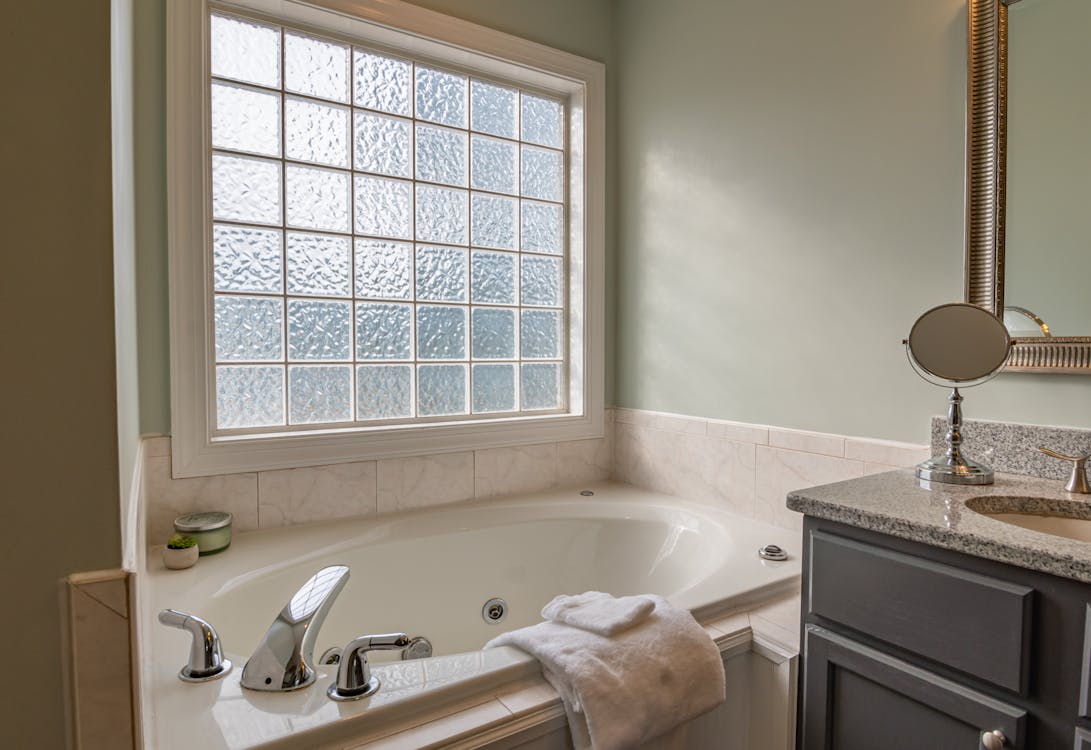
With each passing year, new trends emerge in the world of interior design, and bathrooms are no exception. The year 2024 is set to bring some exciting changes and innovations to bathroom design. From customized showers to sustainability and eco-consciousness, homeowners will have plenty of options to update their bathrooms and create spaces that are both functional and aesthetically pleasing. Let’s explore the top trends in bathroom design for 2024.
Customized Showers
One of the most popular trends in bathroom design for 2024 is the customization of showers. Homeowners are looking for unique and personalized shower experiences, and designers are meeting this demand with state-of-the-art features.
Some key elements of customized showers include:
- Multiple showerheads: Incorporating multiple showerheads allows for a more luxurious and spa-like experience.
- Steam showers: Steam showers provide the ultimate relaxation and wellness experience, offering the benefits of a sauna in the comfort of your own bathroom.
- Digital controls: Digital controls allow users to customize water temperature, pressure, and even lighting to suit their preferences.
Warmer Earthy Tones
In 2024, warmer earthy tones will take center stage in bathroom design. These colors bring a sense of comfort and tranquility to the space, creating a spa-like atmosphere.
Some popular earthy tones to consider incorporate into your bathroom include:
- Terracotta: This rich and warm reddish-brown hue adds depth and a touch of nature to any bathroom.
- Olive green: A versatile and soothing color, olive green can create a sense of serenity and balance.
- Warm neutrals: Shades of beige, taupe, and sandy tones lend a timeless and elegant look to bathrooms.
Sustainability and Eco-consciousness
As the world continues to prioritize sustainability, bathroom design is following suit. In 2024, homeowners are increasingly focused on eco-friendly options for their bathrooms.
Some sustainable trends in bathroom design for 2024:
- Water-saving fixtures: Low-flow toilets, faucets, and showerheads can significantly reduce water consumption without sacrificing performance.
- Recycled materials: Incorporating recycled materials into bathroom design not only reduces waste but also adds a unique and stylish touch.
- Energy-efficient lighting: LED lights and other energy-efficient lighting options can help homeowners save energy and lower their electricity bills.
Incorporating More Colors, Textures, and Patterns
Trends in bathroom design for 2024 will move beyond the traditional white and monochromatic aesthetics. Homeowners will be embracing more colors, textures, and patterns to create visually stunning and personalized spaces.
Some ways to incorporate more colors, textures, and patterns include:
- Colorful tiles: Bold and vibrant tiles can add a pop of personality and create a statement wall or floor in the bathroom.
- Textured finishes: Textured walls or surfaces can add depth and visual interest to the space.
- Patterned wallpaper: Wallpaper featuring botanical prints, geometric patterns, or even metallic accents can elevate the design of any bathroom.
Trends in bathroom design for 2024 are all about creating spaces that are functional, beautiful, and sustainable. Whether it’s a customized shower, warm earthy tones, or bold patterns, homeowners have a wide range of options to choose from when updating their bathrooms. So why not embrace these trends and transform your bathroom into a stylish and inviting oasis?
Step 1: Planning and Inspiration

When starting a new project, whether it be a blog post, a website, or any piece of content, planning and drawing inspiration are key steps to success. These preliminary stages help lay the foundation for a well-structured and engaging piece that resonates with your target audience.
Here are some tips to get you started:
- Define your goals and target audience: Before diving into the creation process, take a step back and think about what you want to achieve with your content. Are you looking to educate, entertain, or inspire your readers? Identifying your goals will help shape your content and guide your decision-making throughout the writing process. Additionally, understanding your target audience is crucial as it enables you to tailor your content to their interests and preferences.
- Conduct thorough research: Research is a fundamental aspect of planning and gaining inspiration. It not only helps you gather information and insights but also allows you to explore different perspectives and find unique angles for your content. Look for reputable sources, read articles, watch videos, and immerse yourself in relevant content to expand your knowledge on the topic at hand.
- Brainstorm and organize ideas: Once you have gathered enough information, it’s time to brainstorm ideas. Grab a pen and paper, or use a digital tool, and start jotting down all the relevant ideas that come to mind. Don’t worry about their order or coherence at this stage; the goal is to get all your thoughts out on paper. Once you have a set of ideas, organize them according to relevancy and logical flow. This will make it easier for you to structure your content later on.
- Find inspiration in your surroundings: Inspiration can come from various sources, so make sure to keep an open mind and look for it in your surroundings. Take walks in nature, visit art galleries, or engage in conversations with people from different backgrounds. These experiences can spark creativity and bring a fresh perspective to your content.
As you go through the planning and inspiration phase, remember to stay open to new ideas and be adaptable. Sometimes, your initial plan may evolve as you further explore the topic or gain new insights. Embrace this fluidity and allow your creativity to flow freely. With a solid plan and a burst of inspiration, you’re ready to move on to the next steps of creating your content.
Start your journey of planning and inspiration with a clear vision in mind and a thirst for knowledge. Let these guiding principles pave the way for an engaging and impactful piece of content that speaks directly to your target audience.
Step 2: Assess Your Bathroom Space

Once you’ve identified your design preferences and gathered some inspiration, it’s time to move on to the practical side of things. Before you can start choosing fixtures and picking out tiles, you need to assess your bathroom space. This step is crucial in ensuring that your design vision becomes a reality while taking into account the limitations and possibilities of your bathroom.
Assessing your bathroom space involves evaluating its size, layout, and existing features. By doing so, you’ll be able to determine what is feasible and what might need to be adjusted or renovated.
Here are some key factors to consider during this assessment:
- Measurements: Start by taking accurate measurements of your bathroom. Note the length, width, and height of the space. This information will come in handy later when you’re selecting fixtures, fittings, and furniture. By having precise measurements, you can ensure that everything fits properly and avoids any unexpected surprises.
- Layout: Examine the layout of your bathroom and identify any structural elements that could affect the design. Look for windows, doors, pillars, or built-in features such as bathtubs or shower stalls. These elements will dictate where certain fixtures can be placed and may impact the overall flow of the space.
- Plumbing and Electrical Systems: Take note of the existing plumbing and electrical components in your bathroom. This includes pipes, drains, outlets, and switches. Understanding the location and condition of these systems will help you plan your design without interfering with the functionality and safety of your bathroom.
- Storage: Evaluate the storage options in your bathroom. Determine whether you have enough cabinetry, shelves, or closet space for your needs. If there is limited storage, consider incorporating space-saving solutions like floating shelves or built-in niches to maximize the available space.
- Lighting: Assess the natural and artificial lighting in your bathroom. Consider the placement of windows and how they affect the natural light. Pay attention to existing light fixtures and their functionality. Good lighting is essential for creating a functional and inviting bathroom space.
By taking the time to assess your bathroom space thoroughly, you’ll be better equipped to make informed decisions during the design process. You’ll have a clear understanding of the limitations and possibilities inherent in your space, allowing you to create a design that is not only aesthetically pleasing but also functional and practical.
Pro Tip: If you’re feeling overwhelmed or unsure about assess your bathroom space, consider consulting with a professional interior designer or architect. Their expertise can help you navigate any challenges or limitations and ensure that your design meets both your vision and the requirements of your bathroom space.
Step 3: Flooring and Wall Finishes

In the step of renovating a bathroom, attention turns to flooring and wall finishes. This is where the true character of the space starts to emerge, as each design choice adds its own unique touch. From luxurious tiles floors to vibrant accent walls, the options are plentiful and exciting. Let’s explore the different aspects of flooring and wall finishes to consider when transform your bathromm into a relaxing oasis.
Choosing the Right Flooring
When it comes to choosing the right flooring, factors such as durability, aesthetics, and maintenance should be taken into account.
Here are some popular flooring options to consider:
- Hardwood Flooring: Hardwood floors add a timeless and elegant touch to any room. They are durable, easy to clean, and can last for decades with proper care. Popular choices include oak, walnut, and cherry.
- Laminate Flooring: Laminate flooring offers the look of hardwood at a more affordable price. It is easy to install, durable, and resistant to scratches and stains. Laminate is also available in a wide variety of styles and colors.
- Tile Flooring: Tile flooring is a versatile option that can be used in any room of the house. It is durable, water-resistant, and easy to clean. Ceramic and porcelain tiles are popular choices and come in a range of colors and patterns.
- Vinyl Flooring: Vinyl flooring has come a long way and is now available in a range of styles, including luxury vinyl planks that mimic the look of hardwood. It is durable, water-resistant, and budget-friendly.
Enhancing Walls with Finishes
Wall finishes can transform a space and create a unique atmosphere. Here are some popular options to consider:
- Paint: Painting walls is one of the simplest and most cost-effective ways to give a room a fresh new look. Explore different color palettes and consider using an accent wall to add visual interest.
- Wallpaper: Wallpaper is making a comeback with a variety of modern designs and patterns. It is a great way to add texture and visual interest to a space. Choose from peel-and-stick options for easy installation and removal.
- Textured Finishes: Textured finishes, such as stucco or Venetian plaster, can add depth and character to walls. These finishes can be applied in a variety of ways to create a unique look.
- Wood Paneling: Wood paneling can add warmth and a rustic feel to a space. Choose from traditional wood paneling or explore modern options, such as reclaimed wood or shiplap.
Remember, the flooring and wall finishes you choose should complement the overall style and design of your home. Take the time to explore different options and consider consulting with a professional if needed. With the right choices, your flooring and wall finishes will bring your home renovation project to life, creating a beautiful and inviting space for years to come.
Also Read : Creating a Minimalist Bathroom : Spa-like Retreat in 2024
Step 4: Lighting and Ventilation

When it comes to renovating a bathroom lighting and ventilation are two key elements to consider. Proper lighting enhances the ambiance of a room, while good ventilation ensures a healthy and fresh environment. Whether you’re designing a new space or renovating an existing one, it’s important to pay attention to these aspects.
Importance of Lighting
Lighting has a significant impact on how we perceive and experience a space. It affects the overall atmosphere, functionality, and even our mood.
Here are a few reasons why lighting is crucial in any setting:
- Aesthetics: The right lighting can enhance the beauty of a room by highlighting architectural features, artwork, and decor. It can create focal points and add depth and dimension to the space.
- Functionality: Proper lighting is essential for performing tasks efficiently. For example, task lighting in the kitchen helps with meal preparation, while well-placed lighting in a study or home office reduces eye strain during work.
- Mood and Ambiance: Lighting sets the mood of a room. Bright, cool-toned lighting can make a space feel energizing and lively, while soft, warm-toned lighting creates a cozy and relaxing atmosphere. Adjusting the lighting levels and color temperature can create different moods for different activities or occasions.
Considerations for Lighting
When planning the lighting for your space, keep the following factors in mind:
- Natural Light: Take advantage of natural light whenever possible. Position windows strategically to maximize daylight and consider using light-colored curtains or blinds to allow light to penetrate deeper into the space.
- Layered Lighting: Use a combination of ambient, task, and accent lighting to create a layered effect. This ensures that all areas of the room are well-lit and allows for flexibility in adjusting the lighting levels for different purposes.
- Light Fixtures: Choose fixtures that complement the style and function of the room. Consider the size, shape, and color of the fixtures as they can impact the overall aesthetic. From chandeliers to pendant lights to recessed lighting, there are numerous options available to suit your preferences.
The Role of Ventilation
Proper ventilation is essential for maintaining a healthy indoor environment. It helps remove pollutants, control moisture levels, and circulate fresh air.
Here are some reasons why ventilation is important:
- Air Quality: Good ventilation helps remove indoor pollutants such as dust, VOCs, and odors. It ensures a continuous supply of fresh air, reducing the risk of health issues associated with poor indoor air quality.
- Moisture Control: Proper ventilation helps control humidity levels, preventing the buildup of moisture that can lead to mold and mildew growth. It also helps reduce condensation on windows and walls, preventing damage and preserving the integrity of the structure.
- Comfort: Ventilation plays a crucial role in maintaining thermal comfort by regulating temperature and reducing stuffiness. It prevents the buildup of heat and creates a pleasant and comfortable environment.
Factors to Consider for Ventilation
When planning the ventilation for your space, consider the following factors:
- Natural Ventilation: Maximize natural ventilation by strategically positioning windows and doors to allow for cross-ventilation. Properly designed openings can facilitate the flow of fresh air into the space.
- Mechanical Ventilation: In spaces where natural ventilation is insufficient, consider mechanical ventilation systems such as exhaust fans, ventilation hoods, or air purifiers. These systems help remove stale air and introduce fresh air into the space.
- Control and Regulation: Ensure that ventilation systems can be easily controlled and regulated. Consider options such as timers, thermostats, and air quality sensors to optimize ventilation based on the specific needs of the space.
Remember, when it comes to lighting and ventilation, striking a balance between functionality, aesthetics, and health is key. By carefully considering these aspects, you can create an environment that is both inviting and conducive to well-being.
Step 5: Installation and Renovation
Now that the planning and preparation stages are complete, it’s time to move on to the exciting part: installation and renovation. This step is where all your hard work and meticulous planning will start to come to life. Whether you’re renovating a bathroom, kitchen, or an entire home, this is the stage where you’ll see significant transformations taking place.
During the installation and renovation process, you’ll be working closely with contractors, electricians, plumbers, and other professionals to ensure that everything is installed correctly and up to code.
This step involves several tasks, including:
- Demolition: If you’re doing a full-scale renovation, this is the stage where the old materials and fixtures are removed. It’s important to hire professionals to handle demolition to ensure safety and proper disposal of waste materials.
- Electrical and Plumbing Work: This is when all the necessary electrical and plumbing fixtures are installed. It’s crucial to have certified professionals handle these tasks to ensure safety and compliance with building codes.
- Flooring, Walls, and Ceilings: Once the demolition and necessary electrical and plumbing work is complete, it’s time to focus on the foundation of your space. This includes installing new flooring, drywall, and ceiling materials. You’ll have a wide range of options to choose from, such as hardwood, tile, carpet, and various wall finishes.
- Cabinets and Countertops: For renovations involving kitchens or bathrooms, installing cabinets and countertops is a significant part of the process. These elements not only provide functionality but also contribute to the overall aesthetic of the space.
- Fixtures and Appliances: This is where you get to add the final touches to your renovated space. From light fixtures to faucets and appliances, this is where you can inject your personal style and preferences. Make sure to choose energy-efficient fixtures and appliances to save on utility costs in the long run.
Throughout the installation and renovation stage, it’s essential to communicate regularly with your contractors and other professionals involved. Keep track of progress, address any concerns, and stay updated on any potential changes or challenges that may arise.
Remember, the installation and renovation stage is an exciting and transformative process. With proper planning and execution, you’ll soon be able to enjoy your newly renovated space, tailor-made to suit your needs and preferences.
Conclusion
In conclusion, transform your bathroom into a relaxing oasis is a process that requires careful planning, creative inspiration, and attention to detail. By staying up-to-date with the top trends in bathroom design for 2024, you can create a space that is not only functional but also visually stunning. From customized showers to warm earthy tones and sustainable design choices, there are numerous ways to make your bathroom a sanctuary of relaxation and rejuvenation.
Remember to consider your budget and choose a design style that aligns with your personal preferences. Select fixtures and furniture that enhance the overall aesthetic and functionality of your bathroom. Pay attention to flooring and wall finishes to create a cohesive look, and don’t underestimate the importance of proper lighting and ventilation.
Throughout the renovation process, keep in mind the installation and renovation steps to ensure a smooth and successful transformation. With the right planning and execution, you can transform your bathroom into a relaxing oasis and escape from the stresses of daily life.
Arkitecture Today is here to guide and inspire you along the way. Visit our blog at arkitecture.today for more articles on architecture, home and interior design, decoration ideas, and inspiration for your bathroom and other spaces in your home. Let us help you create the bathroom of your dreams.
Frequently Asked Questions
- What are some essential steps to transform your bathroom into a relaxing oasis?Some essential steps to transform your bathroom into a relaxing oasis include decluttering, incorporating soothing colors and lighting, adding plants, using aromatherapy, and creating a spa-like atmosphere with luxurious towels and bath products.
- How can I declutter my bathroom effectively?To declutter your bathroom effectively, start by removing unnecessary items and organizing essentials in storage containers or shelves. Consider utilizing space-saving solutions such as over-the-door hooks, wall-mounted racks, and shower caddies.
- What colors and lighting should I use to create a calming atmosphere in my bathroom?Soft, neutral colors like light blues, grays, and earth tones can create a calming atmosphere in your bathroom. For lighting, opt for dimmable lights or install fixtures that mimic natural light to enhance relaxation.
- What types of plants are suitable for a bathroom?Plants that thrive in humid environments are ideal for bathrooms. Some suitable options include ferns, peace lilies, snake plants, bamboo, and spider plants. Consider the lighting conditions in your bathroom when choosing plants.
- How can I incorporate aromatherapy into my bathroom for relaxation?You can incorporate aromatherapy into your bathroom by using scented candles, essential oils, or bath bombs. Lavender, eucalyptus, and chamomile are popular calming scents that promote relaxation and stress relief.

